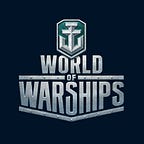USS Wichita (CA-45) — The Bruiser Cruiser
Wichita isn’t just a city in Kansas, it’s also one of the most decorated heavy cruisers in the history of the United States Navy.
History
The last heavy cruiser to have entered service for the United States before the start of World War II, USS Wichita was a unique warship, and in fact, the only unit to be produced of her class. Despite her uniqueness, she will appear familiar to any admirers of American naval design due to her striking physical similarity to many US wartime cruisers, such as the Cleveland-class and the Baltimore-class. This is because all three designs were based on the same basic hull.
Wichita was originally intended to fall under the New Orleans-class of Heavy Cruisers, but those plans were changed before she was laid down in 1935. This was due to the new light cruiser USS Brooklyn, which had started turning heads after she proved to be more agile and fuel-efficient than older designs during her trials. This was in addition to having a superior AA layout due to her reorganized deck and superstructure. It was decided that Wichita was to be fitted with a Brooklyn-class hull, with modifications to accommodate the 203 mm guns that would ultimately give Wichita the heavy cruiser classification. Though the Brooklyn hull was originally intended for a light cruiser, changes to armor thickness for Wichita were minimal, keeping in mind that, as stipulated by international naval treaties, a heavy cruiser was defined only by its gun caliber (between 155 and 203 mm) and total displacement.
Wichita was commissioned in early 1939 and the outbreak of the war in Europe surprised her whilst she was performing her shakedown cruise in the Caribbean. This allowed her to begin her active commissioned career just a matter of weeks later, by participating in Neutrality Patrols in the Atlantic. The aim of these was to protect American shipping from harm and guarantee the sovereignty of US territorial waters. Neutrality Patrols would soon turn into combat patrols, however, when the United States entered the war in December 1941. Based in US-occupied Iceland, Wichita engaged in regular patrols in the Denmark Strait from the beginning of 1942, as well as escorting Allied convoys through the Arctic Ocean on the Scapa Flow — Murmansk run. In November, Wichita was assigned to aid in the invasion of French North Africa — Operation Torch. The cruiser played a key part in silencing coastal defense batteries, and she also famously dueled with battleship Jean Bart at Casablanca, alongside USS Massachusetts.
In 1943, USS Wichita was sent to the Pacific Theater, where she would spend the remainder of the war. Her first encounter with the Imperial Japanese Navy at the battle of Rennell Island saw her a hit by a torpedo, which fortunately turned out to be a dud. Shortly after this encounter she was assigned to Alaska to support the amphibious assaults intended to retake occupied islands, with heavy shore bombardment. This type of task would become routine for the crew of Wichita, and much of the rest of the war would be spent assisting the advancing Allied island-hopping campaign, culminating in the invasion of Okinawa. Perhaps the most significant surface combat Wichita experienced in the Pacific was during the Battle of the Leyte Gulf in 1944, where she had a part in the sinking of aircraft carrier Chiyoda and destroyer Hatsuzuki.
When the war ended, Wichita travelled to Japan as part of the occupation force and remained there for several months. She later returned to the United States as a part of Operation Magic Carpet, which carried the objective of ferrying US servicemen back home. Not long after her arrival she was mothballed, and finally scrapped in 1959. For her successful and unyielding service in a diverse array of naval theaters during World War II, Wichita was decorated with 13 battle stars.
Recreating Wichita
Main Armament: Nine 203 mm/55 Mk 15 guns in three triple turrets: two fore and one aft. Because of their reliability, these 8-inch guns were the most commonly used on American heavy cruisers during and after World War II, and were produced in several different mounting variations. The Baltimore-class USS Saint Paul is recorded as having used this type of artillery to score accurate hits on ground positions during the Vietnam War at a whopping distance of over 55 km.
Secondary Armament: Eight 127 mm/38 dual-purpose guns: four on deck amidships, and another four on elevated platforms around the superstructure. One of the most successful pieces of naval artillery used in World War II, these guns were designed originally as the main armament for new destroyers, but quickly found their way onboard most surface combat ships of the US Navy due to their reliability and high fire rate.
AA: Eighteen 20 mm Oerlikon machine guns and twenty-four 40 mm Bofors automatic cannons in four double and four quad mounts. This amount of anti-aircraft firepower can provide a devastating wall of fire and shrapnel to any approaching bomber.
Ship’s 3D Model
Originally published on the official World of Warships site.
